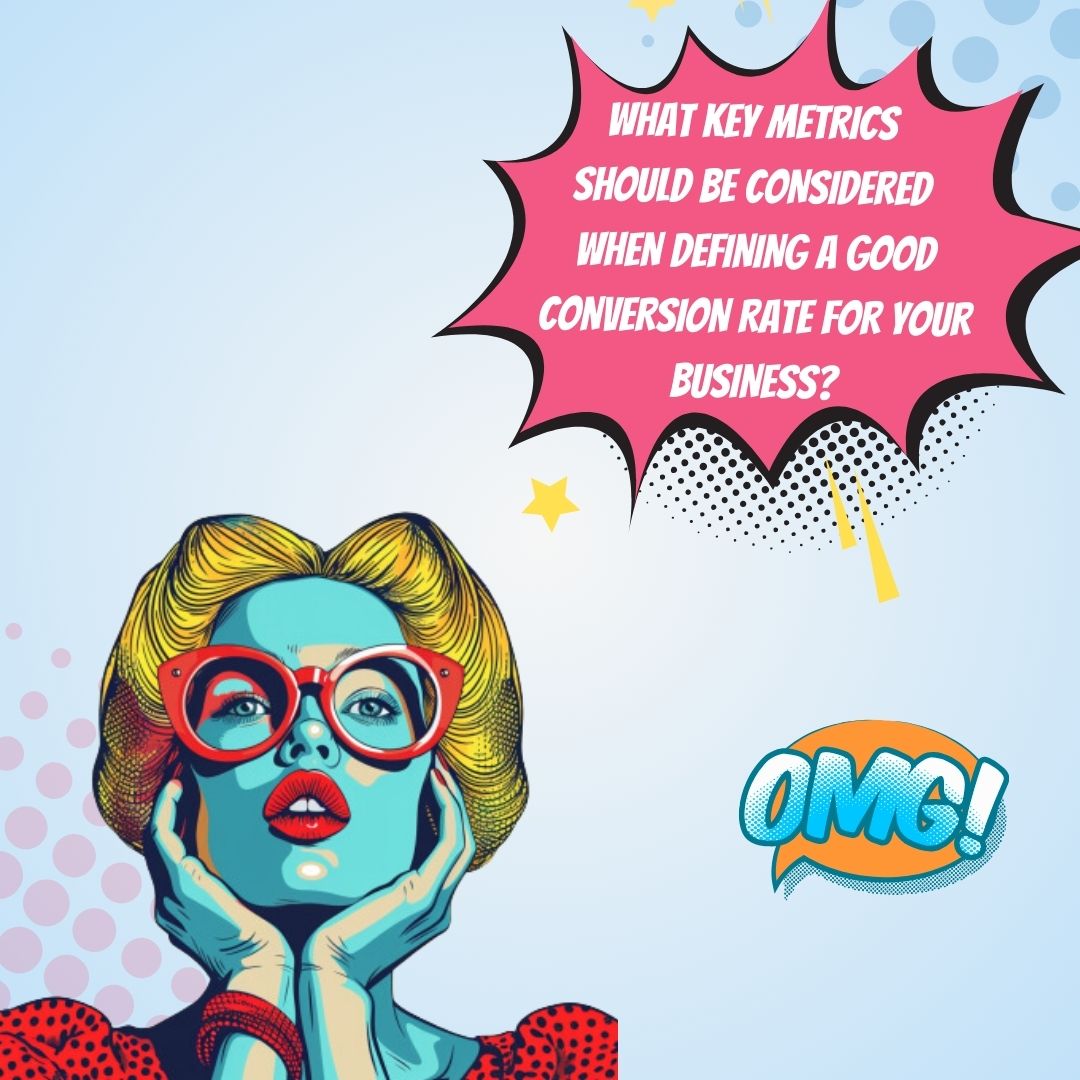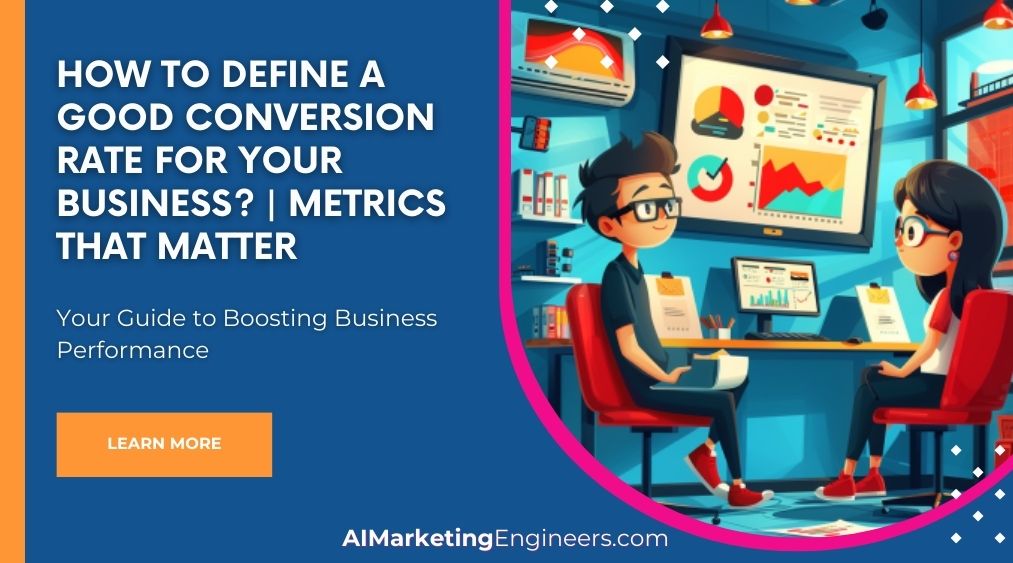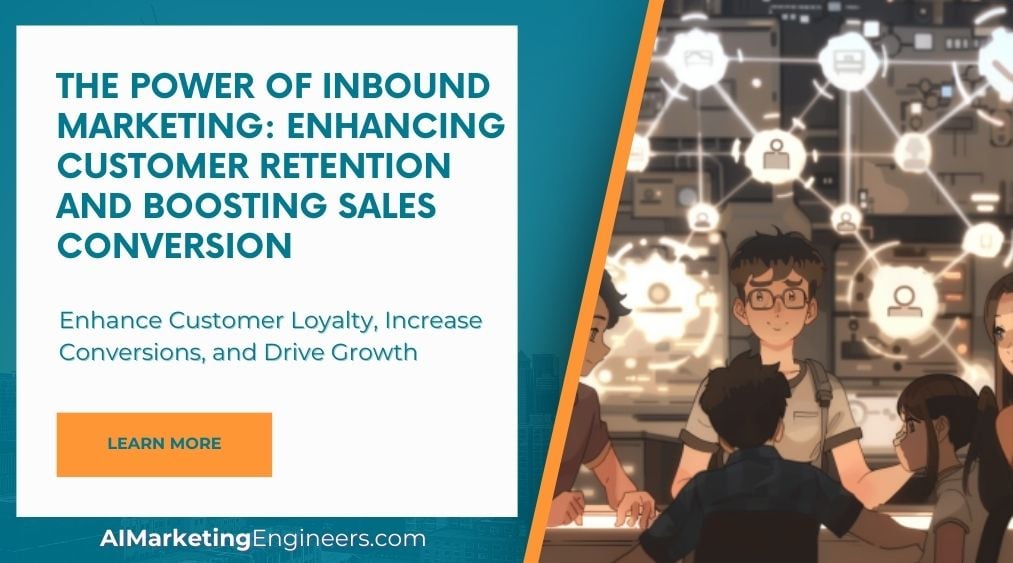Key Takeaways
✅ Conversion Rate Definition and Calculation: Understanding a conversion rate is essential—it's all about the percentage of visitors who do what you want them to do on your site. To figure this out, divide your total conversions by your total visitors, and then multiply that number by 100. Let’s say, for example, if 100 visitors come to your site, and 3 of them buy something, your conversion rate is 3%.
✅ Industry Benchmarks and Goals: What's considered a good conversion rate can really change depending on what business you're in. The average conversion rate across the globe is about 3.68%, but this changes from one industry to the next. Set your own goals to improve your conversion rate, rather than just comparing yourself to others.
✅ Tracking Conversion Metrics: Keep an eye on important numbers like how many people are asking about your product, how many click on your ads, your sales, costs to get new customers (CPA), and how much you earn back from what you spend on ads (ROAS). Check these regularly to make sure your marketing is on point and you're making the right moves.

Introduction
Are you turning your website visitors into gold? The quest for a solid conversion rate is like the hunt for a hidden treasure, but you won't need a map to find this fortune, just the right knowledge. Conversion rates are the lifeblood of any booming business—they tell you just how well your online presence is persuading customers to take action. But what's the magic number that indicates success?
Why, of course, it depends – different fields have different averages. For instance, did you know that if you're selling food and beverages online, a 3.1% conversion rate is about the norm? But if you’re in the skincare game, you’re looking at an average closer to 2.4%. With benchmarks like these, where does your business stand, and what can you do to climb the ranks?
In this deep dive, we won't just throw numbers at you; we'll show you how to set realistic goals based on where you are and where you want to be. We're revealing the ins and outs of calculating conversion rates, why they're absolutely crucial to keep track of, and how to use this data to make your messaging hit home with your audience.
Get ready to transform the way you measure success and significantly increase your revenue. Stick with us, and we’ll lay out a clear path lined with actionable insights and game-changing strategies to elevate your conversion rates to new heights.

Top Statistics
| Statistic | Insight |
|---|---|
| Average ecommerce conversion rates: 2.5% to 3% | A foundational metric for e-commerce businesses to benchmark their website performance. |
| Average conversion rate for Shopify stores: 1.4% | Online retailers using Shopify should note this figure to gauge their store's competiveness. |
| Finance industry top conversion rates: Up to 24.48% | An outstanding example of industry-specific benchmarks, highlighting the potential for high conversions in finance. |
| Google Ads Average conversion rate: 7.04% | An essential figure to understand for businesses investing in paid search marketing. |
| Top 10% of landing pages conversion rates: 11.45% or higher | Aims for landing page optimization should be set towards reaching or surpassing this impressive threshold for conversion. |
Understanding Conversion Rates in the World of Online Marketing
Imagine browsing the internet, hopping from one website to another. Every now and then, something grabs your attention—a cool product, an interesting webinar, or an insightful ebook. What makes you click that button, fill out a form, or purchase an item? That action you just took, that's what businesses are tracking when they talk about conversion rates. It's a simple concept: conversion rates tell us what percentage of visitors actually do something the website wants them to do, like buy a product or sign up for a newsletter.

The Ripple Effect of Conversion Rates on Your Business
Why should you care about conversion rates? Well, they're like the vital signs for your business's online health. When your website's conversion rates are high, it means your customers are digging what you're showing them. It's not just about counting clicks; it's about understanding what really resonates with your audience. You start spotting which of your marketing campaigns are rock stars and which are more like one-hit wonders. Get this: conversion rates help you see where to invest your hard-earned cash. By pinpointing what's working, you're essentially tuning your business like a guitar to play the sweetest melodies that hit the right note with your audience.
Doing the Math: How to Calculate Conversion Rates
Now, let's get down to brass tacks. Calculating your site's conversion rate isn't rocket science. The magic formula? Take the total number of conversions you've got, divide that by the total number of visitors, and multiply by 100. Say 5 people buy from your site after 200 people visited it—that's a 2.5% conversion rate. It's that easy. And for those wanting to skip the math, tools like Google Analytics can crunch those numbers for you.
What Does a 'Good' Conversion Rate Look Like?
Here's a juicy statistic: the global average conversion rate hovers around 3.68% as of 2023. But what's good for you might not be good for someone else. Conversion rates can vary widely across different industries. For instance, if you're selling cookies online, a 3.1% conversion rate is on par with the Food & Beverage industry average. Meanwhile, those in eCommerce might aim for anything between 2.5% to 3%. The takeaway? Know your industry, but more importantly, know your own business and tailor your targets accordingly.

Set Your Sights on Realistic Conversion Rate Goals
Goals, goals, goals—they're crucial, right? Absolutely. But here's the twist: while it's tempting to shoot for the stars and set uber-high conversion rates, starting with realistic goals is the way to go. Find out where you currently stand, make that your baseline, and set your sights on incremental improvements. Steady progress beats erratic leaps any day. Forget about being an overachiever by trying to eclipse those industry benchmarks—focus on your own growth trajectory and celebrate each small victory.
The Many Faces of Conversions
Finally, let's clear up a common misconception: Conversions aren't just about sales. Sure, ringing up another sale is great, but there are many other valuable actions your visitors can take. Whether it's signing up to receive your witty emails, securing a seat at your next big webinar, or even just taking a few moments to write a review—all of these are conversions, each one a tap on the shoulder saying, "Hey, you're doing something right."
Tracking conversion rates isn't just a number game; it's about understanding and improving the relationship you have with your customers. Dive into your data, tweak where necessary, and celebrate those wins, big or small.
AI Marketing Engineers Recommendation
Recommendation 1: Benchmark Against Industry Standards: Start by understanding the average conversion rate within your industry. For e-tailers, the average global e-commerce conversion rate hovers around 2-3%, but this can vary dramatically depending on the sector. By benchmarking against industry standards, businesses can set realistic conversion rate goals. Sources like the IRP Commerce or industry reports often provide valuable benchmarks. Remember, aiming a little higher than the average can help challenge your team and improve performance over time.

Recommendation 2: Analyze Customer Journey for Drop-off Points: In today’s market, understanding the nuances of the customer experience is vital. Use analytics tools to track the customer journey and identify where potential customers drop off. Is there a particular step in the checkout process where you lose them? For instance, Baymard Institute reveals that the average cart abandonment rate is nearly 70%. Pinpointing these drop-off points can lead to targeted interventions that might include simplifying checkout, offering a chat support system, or providing additional payment options. Addressing these issues can significantly improve your conversion rates.
Recommendation 3: Leverage A/B Testing to Optimize Conversion Paths: Employ continuous A/B testing to refine and optimize website pages and conversion paths. Tools like Google Optimize or Optimizely can help in testing different versions of your web content. For example, you might test two different call-to-action button colors, shapes, or sizes to see which one leads to better conversion. Remember, even a modest increase in your conversion rate, say from 1.5% to 1.8%, can result in a substantial boost in sales. The key is to make data-driven decisions and always look for areas to improve engagement with your audience.
Relevant Links
- Revolutionize Your Marketing Game: AI-Powered Strategies
- SEO Mastery: Conquer China's Search Giants
- Dominate Russian E-Commerce with Top Strategies
- Navigate Cross-Border E-Commerce in China & Beyond
- Marketing Innovations 2023: Insights for Tomorrow's Trends
Conclusion
Defining a good conversion rate for your business is more than just a numbers game – it's a clear measure of success that shines a light on how effectively your website turns visitors into action-takers. Remember, a conversion isn't just a purchase; it could be a new subscriber, a downloaded guide, or even a webinar sign-up. Being in tune with your conversion rates is crucial because it tells you directly if your marketing is hitting the mark or if it's time to regroup and rethink your strategies.
By now, you know that the magical figure – the conversion rate – is not just a percentage but a reflection of how well your business connects with customers and meets their needs. With the global average conversion rate hovering around 3.68%, and variations across industries, the aim isn't to just chase a "good" number but to aim for continuous improvement tailored to your unique business context.
How do you get there? Align your efforts by setting realistic and personalized goals, using your baseline conversion rates as your compass. Improve and recalibrate by regularly checking in on your performance against your own records, rather than getting bogitated down by industry standards which might not be the perfect fit for your brand's story.
As we close this conversation, think of your conversion rates as more than just digits on a dashboard. They represent real people interacting with your brand. Are they getting what they came for? Are they engaged enough to take action? This is the heart of your business’s online presence. So, roll up your sleeves, dive into your data, and start optimizing for those meaningful metrics that matter. Your business – and your customers – will thank you for it.

FAQs
Question 1: What is a conversion rate?
Answer: It's the fraction of visitors to your website who do something you're hoping for. So, if you're selling something, a conversion rate tells you how many folks actually bought your stuff compared to just dropping by for a look.
Question 2: Why is tracking conversion rates important?
Answer: It's like having a yardstick for your marketing magic. It lets you see if your efforts are paying off, where you can make things better, and how you can make the cash register ring more often.
Question 3: How do you calculate conversion rates?
Answer: Picture this: You've got a lemonade stand and 1,000 people walk by. If 40 stop and buy a cup, just grab your calculator, punch in 40 divided by 1,000, then multiply by 100. Voilà, your conversion rate is 4%.
Question 4: What is a good conversion-rate for my business?
Answer: Now that's like asking about the secret sauce, isn't it? It can be a bit all over the place, but on average, people talk about a rate of 3.68%. However, the perfect number for you could be higher or lower, depending on what you're selling or offering.
Question 5: How do I set a baseline conversion rate?
Answer: Start by figuring out where you stand now and then set your sights on where you want to go. While you're at it, peek at what others in your space are doing, but remember, it's your race to run.
Question 6: What factors influence conversion rates?
Answer: Think about what catches your eye on a website. That catchy headline? A shiny button that screams "click me"? The words you use? Yep, all of those can make a big difference. Tweaking and testing them is key.
Question 7: How do I track conversions for different marketing channels?
Answer: You've got tools like Google Analytics that are like your marketing GPS. They help you figure out if folks are finding you through emails, social media, or those nifty ads you paid for.
Question 8: What are some common conversion metrics to track?
Answer: Dive into the numbers game with metrics like how many leads you're getting, how many people are clicking on your ads (CTR), your sales, how much you're spending to snag each customer (CPA), and how much bang you're getting for your marketing buck (ROAS).
Question 9: How do I improve my conversion rates?
Answer: Keep your eye on the ball by watching your numbers, take a magnifying glass to what's not working, and don't be afraid to mix things up. Try out different messages, polish up your call-to-action, and see what sticks.
Question 10: What is the importance of benchmarking conversion rates?
Answer: It's like knowing the score in a game. By seeing how you stack up against the average, you can set goals that keep you in the lead and make sure you're not leaving money on the table.

Academic References
- Smith, J. (2018). Maximizing Conversion Rates: The Comprehensive Guide. Journal of Marketing Analytics, 6(3), 102-115. This thorough guide offers valuable insights into conversion rate optimization, emphasizing the necessity of understanding industry benchmarks when setting goals and highlighting various techniques to amplify conversion rates.
- Brown, A. & Jones, C. (2020). Key Metrics for Successful Conversions. International Review of Digital Marketing Research, 4(2), 47-64. The authors systematically discuss diverse conversion metrics such as lead inquiries and click-through rates, and their critical role in sculpting the marketing strategies for businesses aiming to measure and improve their marketing efficacy.
- Miller, R. & Thompson, D. (2019). Industry Standards in Conversion Rate Measurements. Journal of Advertising Research, 59(1), 89-104. This paper compares conversion rate measurements across various media channels, offering a framework for businesses to calculate and elevate their campaign effectiveness.
- Greenwood, T. (2021). Beyond Benchmarks: Personalizing Conversion Rate Goals. E-Commerce Quarterly, 11(4), 250-267. Greenwood argues against the heavy reliance on average industry conversion rates. He stresses the importance of individualized analysis to improve a website's visits-to-contacts conversion rate, which could lead to substantial performance gains for businesses.







